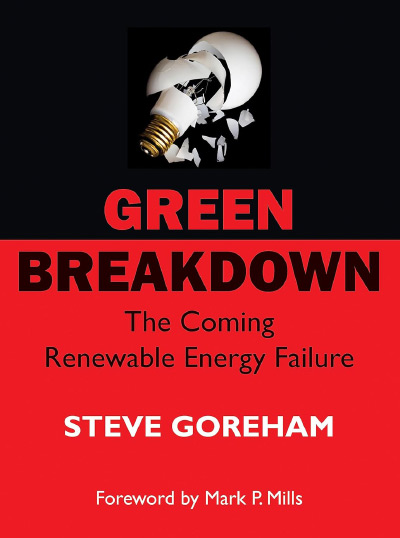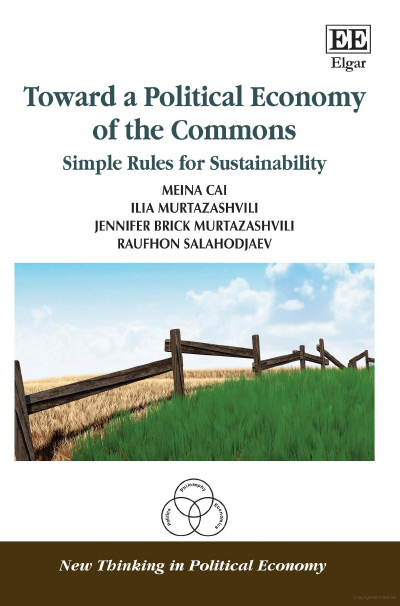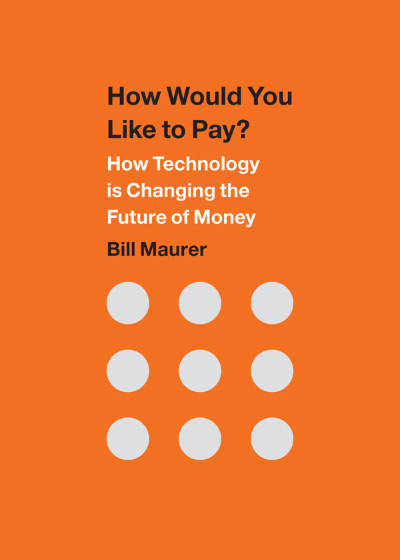Because inventor, entrepreneur, and engineer Saul Griffith knows a lot about energy production, energy consumption, and energy markets, almost anyone will learn a great deal from Electrify—even if they don’t reach his conclusion that it is time to electrify almost everything in sight.
Griffith has an “audacious” (p. 5) plan to save the world from climate change, improve health, deliver cheaper energy, and create millions of additional jobs: electrify almost everything, immediately. His first core argument is that our current energy production system is very inefficient—as much of the power is simply wasted. This is documented in an eye-catching series of Sankey flow diagrams, which visually and quantitatively trace out the flows of energy from their sources (e.g., electricity, coal, petroleum, and natural gas) to their uses (e.g., for the residential sector, things like lighting, heating, air conditioning, water heating, and cooking). In one chapter, he presents six informative Sankey flow diagrams—one each for the government sector, the residential sector, the industrial sector, the transportation sector, and the commercial sector plus one for total energy flows. The bottom line is that United States uses a little over 100 quads of energy—100 quadrillion BTUs—each year. Currently, about 36 percent of this comes from petroleum, 28 percent from natural gas, and 17 percent from coal. That’s 81 percent from fossil fuels. His goal is that within just a few years we can rebuild our commercial and personal infrastructure so that almost all of this will come from renewables in the form of electricity, which currently makes up about 38 percent of energy flows.
Why make such a massive shift? Griffith argues that “we know, with certainty, that we are hurtling toward multiple environmental and human catastrophes” due to fossil fuels, that more than half of our energy flows are currently wasted, and that making this transition can be done without any major technological breakthroughs. Many readers will question the certainty with which we are racing to an environmental apocalypse, but putting that issue aside, let’s examine his arguments quantitatively. The massive waste of primary energy, about 57 percent according to his figures in Table 6.1, arises because of things like thermoelectric losses incurred in burning fossil fuels to create electricity, the inefficiencies of internal combustion engines vs. electric vehicles, the inefficiencies of conventional space and water heating vs. electric heat pumps, and the use of energy to find, mine, refine, and transport fossil fuels. A couple of the items on his list, e.g., “accounting curiosities” and non-fuel uses of fossil fuels seem a little slippery, but the overall point about energy savings stands. More importantly, however, his definition of efficiency is far too narrow, as it ignores costs. Thermodynamic efficiency doesn’t necessarily make for economic efficiency.
To obtain these energy savings, Griffith advocates building new infrastructure that replaces virtually every current power source with electricity produced by solar and wind power (with a dash of nuclear power, as well). This would also involve practically everyone buying electric vehicles, installing electric heat pumps in place of their natural gas furnaces, installing solar panels on their rooftops (and parking areas), and—to balance out the timing of electricity production and consumption—“batteries, batteries everywhere” (p. 83).
He argues that renewable energy is already cost-competitive with fossil fuels, so the transition will save us a lot, but his own numbers cast doubt on this conclusion. The marginal cost of renewables is low—the sun and wind don’t charge by the ton or barrel, unlike suppliers of coal and petroleum—but the fixed costs of renewables are high, especially when you realize those fixed costs include the need for massive storage of electricity. The reader is, perhaps, surprised when Griffith announces that “transitioning to renewables today will require an investment of about $70,000 per American household” (p. 111). I was expecting a much lower figure. This figure includes costs from all sectors per household, but even if we focus only on a single family’s dwelling place, his Table 11.2 estimates personal infrastructure costs of $500 for each electric vehicle (EV) charger, $5000 for a heat pump, $15,000 for rooftop solar panels, and more. The conclusion that “if we do an okay job on cost reduction, every home will save around $1000 per year” won’t sound that consoling to many readers and there are costs omitted from the table (e.g., the cost of actually installing the EV charger—around $1200.) How can indebted households afford these immense upfront costs? Griffith boldly advocates trillions of dollars of low-interest “climate loans” underwritten by the government.
Despite emphasizing that “wind and solar ... are already cheaper than natural gas and other fossil fuels for producing electricity” (p. 6), Griffith realizes that this isn’t the case in practice because you cannot easily store vast amounts of electricity from renewable sources—which are frustratingly intermittent. The moment when battery storage “can beat the grid on cost” is still a way off. “If we halve the capital cost of batteries one more time, and double the cycle life, we will be in that future. It is only a matter of time” (p. 84).
Perhaps the most ill-informed chapter in Electrify, “Mobilizing for World War Zero,” urges policy makers to accelerate the transition to a renewable-energy electrified future by drawing on the experience of World War II. (“World War Zero” is the “war” to achieve utopia by reaching zero greenhouse-gas emissions.) The central argument is that, as the Four Sergeants put it shortly after the attack on Pearl Harbor, “We Did It Before (and We Can Do It Again).” “Not only did America and the Allies win WWII, we created jobs and technologies that insured our country’s long-term prosperity” (p 164). “Building on the mass-production genius of Henry Ford, the Arsenal of Democracy took American-style mass manufacturing to the next level and helped win the war” (p. 166). Except that that’s not how things worked out during World War II. Yes, we won the war. Yes, we ramped up production. But we certainly did not create technologies that insured the country’s long-term prosperity. Alexander Field reaches this sobering conclusion in 2022, The Economic Consequences of U.S. Mobilization for the Second World War(New Haven: Yale University Press). He convincingly demonstrates that total factor productivity (TFP, the amount of output produced per unit of input) “fell during the war because the conflict forced a wrenching shift away from products and processes in which manufacturers had a great deal of experience toward the production of goods in which they had little” (p. 6, emphasis added). Field estimates that TFP—which both before and after the war rose at historically high rates—fell about 1.4 percent per year in the manufacturing sector from 1941 to 1948. Immense learning-by-doing in certain industries couldn’t overcome severe transition problems and disruptions. Efficiency wasn’t prioritized, so haste made waste. Positive spillovers were few and patenting rates fell sharply. Field sees the period as a “detour” (p. 373)—not as a springboard to future growth but as a retardant to economic growth. While Griffith paints Henry Ford as a genius, Field is very critical of his role during the war.
Griffith’s picture of World War II is so rosy that he states (without a source) that consumer spending during the war rose 58 percent, even faster than gross national product. Standard estimates are much less sanguine. Robert Higgs (1992, Wartime Prosperity? A Reassessment of the U.S. Economy in the 1940s, Journal of Economic History 50(2)) notes that standard estimates from the Department of Commerce give a rise in real personal consumption expenditures from 1941 to 1945 around 7 percent—not Griffith’s 58 percent—but demonstrates that these figures are upward biased. Higgs concludes that real personal consumption per capita was lower in every year of the war than it was in 1941.
There’s another big problem with Griffith’s plan. He wants to rush the nation toward electrification, but electrifying doesn’t pass a cost-benefit test for most people at this time—so they won’t readily switch to it even with low-interest subsidized loans. (Griffith wrote when the interest rate on U.S. government debt was at an all-time low, but the interest rate on 10-year Treasury securities is now around 4 percent, so financing his project just got a lot more expensive.)
Those who earnestly think achieving net-zero emissions of greenhouse gases (GHG) is needed immediately will have noticed another big problem. Even if the U.S. were to go through such a wrenching, risky process to reduce its own emissions, concentrations of GHGs would almost certainly continue to rise globally. In a single-paragraph discussion of this issue, Griffith asserts that “If America leads, however, it is likely that other countries will follow once they see the economic advantages of doing so. The early movers will own the lion’s share of these critical twenty-first century industries” (p. 200). Once they see the damage that the sudden move puts on the economy, what will these nations do? What will they think once they see that the supply of labor in installation jobs isn’t very elastic in the short run, so that the wages of solar panel installers soar, costs rise, the quality of installations drops, and consumers face lengthy waits? The unemployment rate was in the double digits when Griffith wrote, but now it is near a half-century low. Thus, adding five million more jobs in this sector isn’t likely to put many more people to work. It’s likely to considerably drive wages up and shift people out of other sectors. Griffith’s job “multiplier” logic is the same failed reasoning that promoters of stadium subsidies use. What will people in other countries think if bottlenecks mean that battery technology doesn’t advance as rapidly as Griffith envisions? What will they think when a massive lobby arises pushing the government to “forgive” these climate loans, just as they have done for student loans? Why would the “lion’s share” go to the first movers? And did you notice that the vast majority of solar panels are made in China?
The greatest strengths of the book are Griffith’s energetic writing style and the myriad of interesting facts that arise as he discusses his “playbook.” We learn, for example, that “a fully loaded modern jet aircraft gets the equivalent of around 60 miles per gallon ... per passenger” (p. 41) and that nearly half of freight-rail transportation in the U.S. is used to move coal. One revealing figure is the shockingly small amount of our total energy flows that go to air conditioning—0.7 quads in the commercial sector and 0.6 quads in the residential sector. That’s about 1.3 percent of energy use and is much less than the 1.8 and 4.2 quads used in those sectors for space heating. But he overdoes the rhetoric in several places. When he says, “we can no longer debate the science” (p. 11), one wonders about all those brisk debates among scientists about the magnitude of climate sensitivity—how much temperature rises due to a doubling of the atmospheric CO2 concentration (see my review of Robert Pindyck’s Climate Future: Averting and Adapting to Climate Change in this issue of The Independent Review). When he says that we have “to achieve the impossible” (p. 5), it sounds to me like “this is a con job.”
| Other Independent Review articles by Robert M. Whaples | ||
| Spring 2025 | Millennials, Gen Zs, Capitalism, Socialism, and Confusion | |
| Spring 2025 | Not Stolen: The Truth about European Colonialism in the New World | |
| Spring 2025 | Green Breakdown: The Coming Renewable Energy Failure | |
| [View All (106)] | ||


















